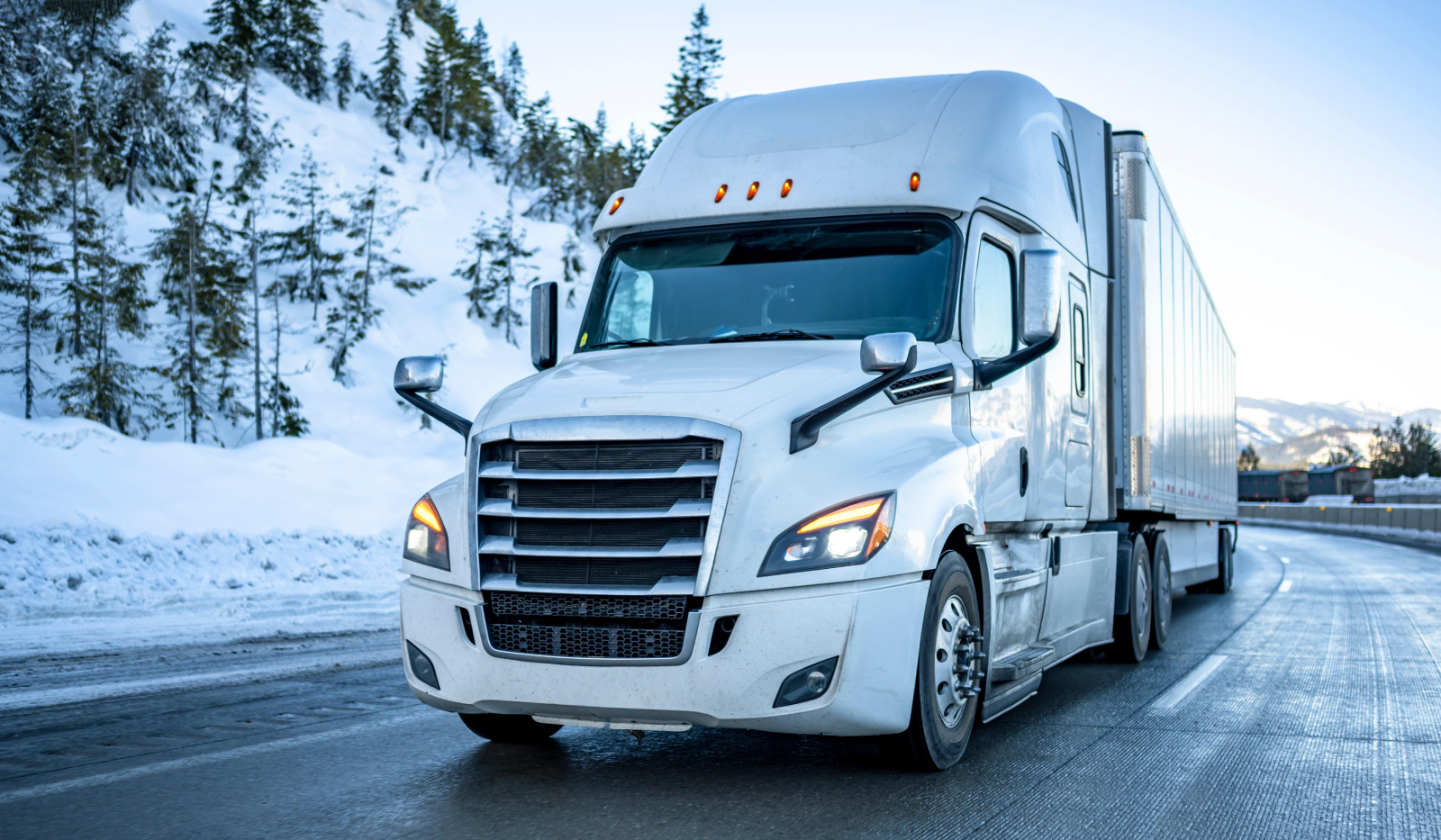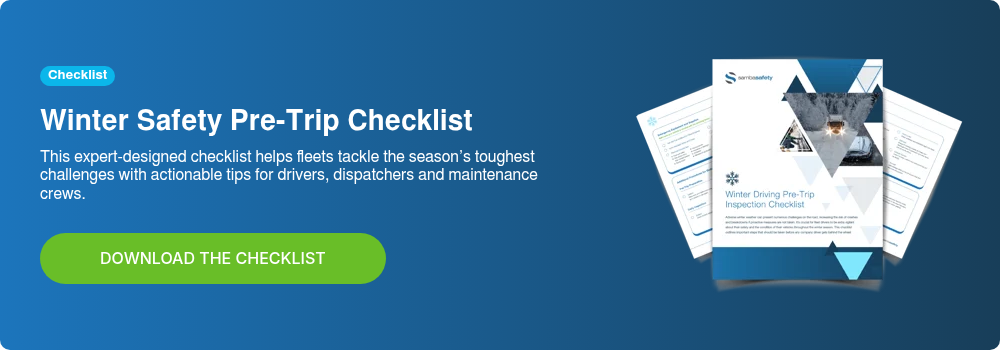
Is your fleet ready for cold weather and dangerous conditions? There’s no time to waste! Winterizing fleet vehicles is an essential step to ensure driver safety, vehicle health and operational efficiency. But with so much to account for, it can be a daunting task.
Getting trucks ready for winter doesn’t have to be tedious or expensive. With these tips, you can prepare your drivers for a variety of seasonal hazards. Here are eight things to focus on.
Download Now | Checklist: Winter Driving Pre-Trip Inspection
Tips For Fleet Managers: How to Winterize Vehicles
1) Maintain Tire Traction
Winter roads are unpredictable and it’s critical that each fleet vehicle’s tires can tackle any kind of terrain. Check the tread before each trip – is it noticeably worn? Are there other signs of damage or disuse? Is the air pressure high enough, or do you need to fill up? Additionally, make sure each driver has (and knows how to install) winter tire chains.
2) Check All Lights
When visibility is low, even a little extra illumination can go a long way. Inspect all vehicle lights – both outside and inside – before each and every trip. Make sure they’re functioning properly, free of snow and ice and bright enough for adverse conditions. If you do notice an issue, fix it before letting the vehicle back out on the road.
3) Fill Up on Fluids
Look at the level of motor oil, brake fluid, windshield wiper fluid and antifreeze, topping off anything that’s running low. Additionally, if your drivers operate diesel vehicles, you may want to consider a winter fuel additive. The paraffin in diesel can gel at 32°F and below, rendering the vehicle useless until temperatures rise.
4) Test Battery Health
Freezing weather can dramatically impact battery performance, making it hard to maintain a charge and even causing short circuits. The AAA Automotive Research Center reports that vehicle batteries can lose 35% of their capacity at freezing temperatures, and nearly 60% when the weather drops to 0° F. Test battery voltage regularly to see if it falls within normal limits. If the voltage is too low, determine whether the battery needs to be charged or replaced outright.
Additionally, examine the battery box cover to make sure it’s secure and free of cracks.
5) Evaluate Brake Systems
Few vehicle features are more vital to successful winter driving than brakes. On a semi-regular basis, complete a thorough evaluation of each brake system component. The LABS test, short for Leaks, Alarms, Buttons and Service brakes, is a handy framework that can identify issues quickly.
6) Prepare an Emergency Kit
No matter how prepared they are, harsh conditions can force a driver onto the side of the road unexpectedly. In the event a driver is stranded or otherwise incapable of completing a route, they’ll need to have resources on-hand to stay safe and comfortable inside of their truck. Stock an emergency kit with practical tools like ice scrapers, flashlights and safety flares. Make sure to include self-care items like non-perishable food, water, first-aid and an emergency blanket, too.
7) Prioritize Parking
When possible during extreme weather conditions, provide covered parking or storage options for fleet vehicles. This can protect them from the elements and minimize the risk of issues caused by prolonged exposure to harsh weather.
BONUS: Enhance Winter Driving Prep with Fleet Driver Training
Winterizing your fleet isn’t just about on-the-road preparedness. Teaching your drivers about the hazards they may face — and how to best handle them — builds a foundation of safety before they get behind the wheel. Integrate winter driving training content into your existing program, including topics like space management, nighttime driving and roadside survival.
Safe Winter Driving Starts with You
Ultimately, plans can go awry and proper equipment and vehicle maintenance will only get you so far! Anything could happen when drivers are out on the road, so they must know how to take care of themselves and their vehicles in any scenario. Thorough pre-trip inspections are a great way to cover the bases and ensure your efforts to winterize vehicles aren’t in vain.
Not sure what to look for? In our free Winter Driving Pre-Trip Inspection Checklist, we outline what drivers should do on a daily basis. Click the link below to download and share with your fleet.




